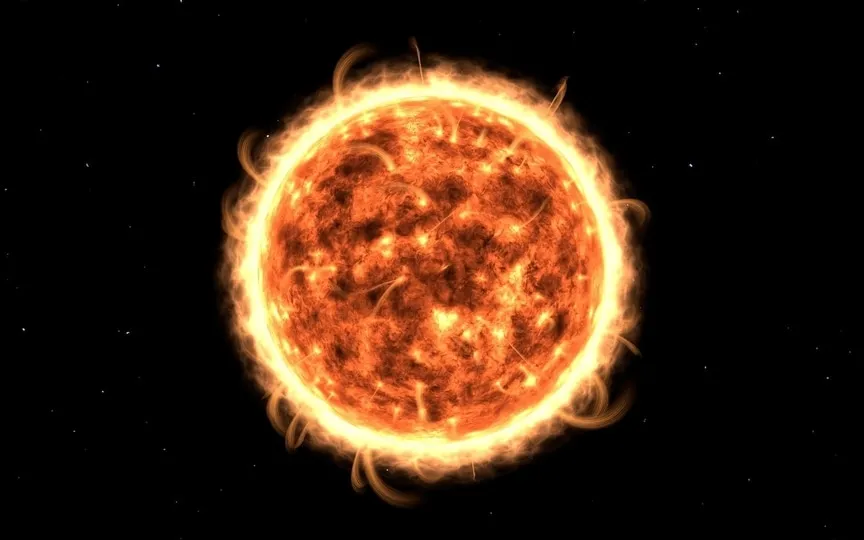NASA Warns of C-class Solar Flare Risk: Key Details Revealed About the Sun
The Solar and Heliospheric Observatory (SOHO), a joint project between NASA and the ESA, was launched in 1995 with the purpose of studying the Sun. It officially began its operations in May 1996 and was initially planned as a 2-year mission. However, it has now surpassed that timeframe and has been in service for 25 years. NASA states that SOHO’s objective is to comprehensively examine the Sun, from its innermost core to its outer corona and solar winds. It accomplishes this by capturing images of the sun’s corona, measuring the velocity and magnetic fields of its surface, and observing the faint corona surrounding it.
Using this advanced technology, NASA has reported with the Solar Dynamics Observatory (SDO) that Earth may soon be in the firing line of solar flares. Know all about it.
A dangerous sunspot
According to a report on spaceweather.com by NASA’s Solar Dynamics Observatory (SDO), a region on the Sun’s surface called Sunspot AR3474 has tripled in size today and may be spewing solar flares. For this reason, there is a danger of the release of C class solar flares. These flares are more powerful than M-class solar flares, but can still cause phenomena such as mild radio interference, auroras, and more.
It says “Sunspot AR3474 has tripled in size today and is crackling with C-class solar flares”. It’s the latest solar phenomenon as we move towards the peak of solar cycle 25. We’ve already seen more sunspots than experts predicted, which means the Sun has been full of solar activity. According to NASA, the coronal hole has been detected and the escaping solar winds may reach the Earth today, October 30.
How do solar flares affect technology?
Like asteroids, solar flares also pose a threat to Earth. Strong solar flares can cause power and radio outages for several hours or even days, create aurora borealis, give people on airplanes radiation doses, and even affect elections! Technical equipment is especially at risk during flares. This is because when cosmic rays hit the earth, they release various particles such as energetic neutrons, muons, pions and alpha particles. Although these particles do not affect the human body, they travel through integrated circuits and cause damage, often altering data stored in memory.




